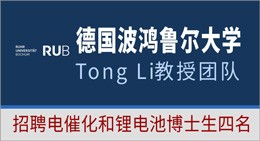General Relativity and Gravitation ( IF 2.1 ) Pub Date : 2024-08-14 , DOI: 10.1007/s10714-024-03284-y
Sourav Bhattacharya , Nitin Joshi , Kinsuk Roy

|
We consider a massless and minimally coupled self interacting quantum scalar field in the inflationary de Sitter spacetime. The scalar potential is taken to be a hybrid of cubic and quartic self interactions, \(V(\phi )= \lambda \phi ^4/4!+\beta \phi ^3/3!\) (\(\lambda >0\)). Compared to the earlier well studied \(\beta =0\) case, the present potential has a rolling down effect due to the \(\phi ^3\) term, along with the usual bounding effect due to the \(\phi ^4\) term. We begin by constructing the Schwinger–Dyson equation for the scalar Feynman propagator up to two loop, at \({\mathcal {O}}(\lambda )\), \({{\mathcal {O}}}(\beta ^2)\), \({{\mathcal {O}}}(\lambda ^2)\) and \({\mathcal {O}}(\lambda \beta ^2)\). Using this equation, we consider first the local part of the scalar self energy and compute the rest mass squared of the scalar field, dynamically generated via the late time non-perturbative secular logarithms, by resumming the daisy-like graphs. The logarithms associated here are sub-leading, compared to those associated with the non-local, leading terms. We also argue that unlike the quartic case, considering merely the one loop results for the purpose of resummation does not give us any sensible result here. We next construct the non-perturbative two particle irreducible effective action up to three loop and derive from it the Schwinger–Dyson equation once again. This equation is satisfied by the non-perturbative Feynman propagator. By series expanding this propagator, the resummed local part of the self energy is shown to yield the same dynamical mass as that of the above. We next use this equation to resum the effect of the non-local part of the scalar self energy in the Feynman propagator, and show that even though the perturbatively corrected propagator shows secular growth at late times, there exists one resummed solution which is vanishing for large spacelike separations, in qualitative agreement with the well known result found via the stochastic formalism.
中文翻译:

通过德西特时空中的施温格-戴森方程恢复局域和非局域标量自能
我们考虑暴胀德西特时空中的无质量且最小耦合的自相互作用量子标量场。标量势被视为三次和四次自相互作用的混合体, \(V(\phi )= \lambda \phi ^4/4!+\beta \phi ^3/3!\) ( \(\lambda >0\) )。与早期充分研究的\(\beta =0\)情况相比,由于\(\phi ^3\)项,当前势具有滚动效应,以及由于\(\phi ^4\)术语。我们首先为标量费曼传播器构建最多两个循环的施温格-戴森方程,在\({\mathcal {O}}(\lambda )\) 、 \({{\mathcal {O}}}(\beta ^2)\) 、 \({{\mathcal {O}}}(\lambda ^2)\)和\({\mathcal {O}}(\lambda \beta ^2)\) 。使用这个方程,我们首先考虑标量自能的局部部分,并通过恢复雏菊状图来计算通过后期非微扰世俗对数动态生成的标量场的剩余质量平方。与非局部前导项相关的对数相比,此处关联的对数是次前导的。我们还认为,与四次情况不同,出于恢复的目的仅考虑一个循环结果不会给我们带来任何合理的结果。接下来,我们构造三环的非微扰二粒子不可约有效作用,并从中再次推导施温格-戴森方程。非微扰费曼传播器满足该方程。通过级数展开该传播器,恢复的自能局部部分显示出产生与上述相同的动力质量。 接下来,我们使用这个方程来恢复费曼传播器中标量自能的非局部部分的影响,并表明即使扰动校正的传播器在后期表现出长期增长,也存在一个恢复的解,该解对于大的类空间分离,与通过随机形式主义发现的众所周知的结果在质量上一致。







































 京公网安备 11010802027423号
京公网安备 11010802027423号